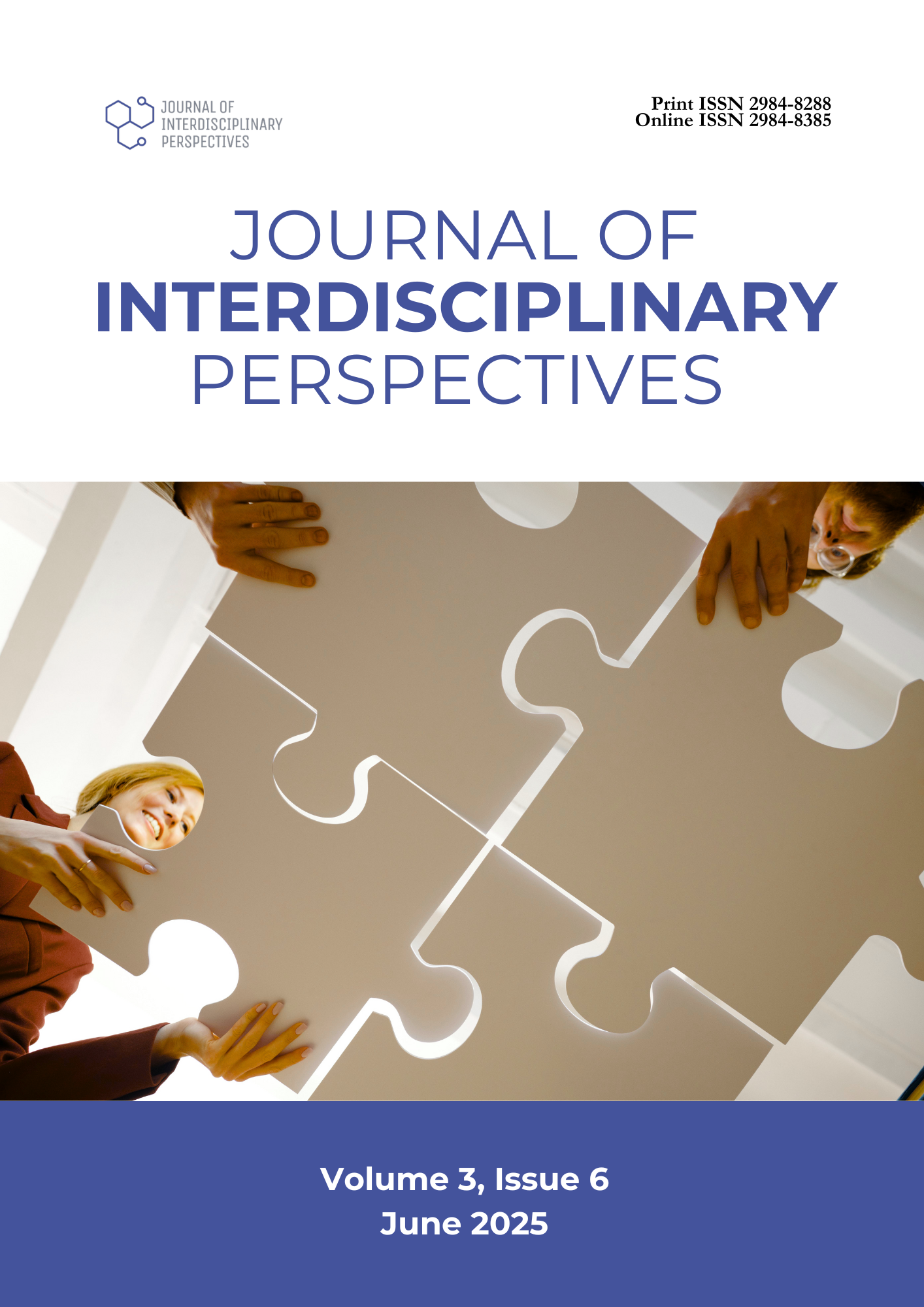TeachTok: Enhancing Elementary Learners' Visual and Multimedia Literacy through TikTok as Mobile-assisted Language Learning Tool
DOI:
https://doi.org/10.69569/jip.2024.700Keywords:
TeachTok, Visual, Multimedia literacy, TikTok, MALLAbstract
This study investigated the effect of integrating TikTok application into English language instruction through Mobile-assisted Language Learning (MALL). The researcher employed a mixed-methods technique utilizing an explanatory sequential design in two phases. By comparing learners' performance in pretest and posttest assessments, a researcher-developed instrument validated by experts was used. Additionally, a semi- structured interview was conducted with key informants to explore the affective, behavioral, and cognitive aspects of their experiences, further corroborating the quantitative findings. Through a purposive sampling technique and carrying out inclusion and exclusion criteria, eighty (80) grade 5 learners from an elementary public school in the Schools Division of Bulacan during the school year 2023 – 2024 were selected as participants. The research opted to utilize a two-group pretest-posttest design with experimental and control groups. Various statistical tools, such as the arithmetic mean and standard deviation, were used for descriptive analysis, and the t-test for Paired Samples was used for inferential statistics, which answered the research hypothesis. At the same time, the qualitative data were analyzed and interpreted through a thematic analysis approach. Results indicated a significant difference in learners' English language performance, as evidenced by the posttest scores. Utterances revealed positive changes in participants’ attitudes, behavioral, and cognitive responses to the subject matter, highlighting the multifaceted benefits of incorporating TikTok in educational contexts. This study contributed to the growing body of research on TikTok and MALL offering Teach instructional framework aiming to leverage contemporary digital tools to enhance English language learning outcomes.
Downloads
References
Affini, L. N. (2022). The use of TikTok application for descriptive text in English writing for the tenth grade of vocational high school. Universitas PGRI Semarang Repository, 2(8), 052-061. https://tinyurl.com/2w24w29z
Ahmad, A. R., & Murad, H. R. (2020). The impact of social media on panic during the COVID-19 pandemic in Iraqi Kurdistan: Online questionnaire study. Journal of Medical Internet Research, 22(5), e19556. https://doi.org/10.2196/19556
Bhandari, A., & Bimo, S. (2022). Why’s everyone on TikTok now? The algorithmized self and the future of self-making on social media. Social Media+ Society, 8(1), 20563051221086241. https://doi.org/10.1177/20563051221086241
Canani, M., & Zulli, T. (2022). ELT and social media: Integrating TikTok into class practice. MediAzioni, 34, A165-A183. https://tinyurl.com/k7w5f5f2
Cataldo, I., Billieux, J., Esposito, G., & Corazza, O. (2022). Assessing problematic use of social media: Where do we stand and what can be improved? Current Opinion in Behavioral Sciences, 45, 101145. https://doi.org/10.1016/j.cobeha.2022.101145
Criollo-C, S., Guerrero-Arias, A., Jaramillo-Alcázar, Á., & Luján-Mora, S. (2021). Mobile learning technologies for education: Benefits and pending issues. Applied Sciences, 11(9), 4111. https://doi.org/10.3390/app11094111
De Matta, S. M. S., Ibaite, X. A., Revistual, N. A. S., & Fajardo, D. F. (2023). Effects of TikTok English teaching videos in the second language acquisition of elementary learners. Dialektika: Jurnal Bahasa, Sastra Dan Budaya, 10(2), 91-112. https://tinyurl.com/6ms9z3k8
Ellitan, L. (2020). Competing in the era of industrial revolution 4.0 and society 5.0. Journal Maksipreneur: Manajemen, Koperasi, dan Entrepreneurship, 10(1), 1-12. https://tinyurl.com/ypct22nm
Ferstephanie, J., & Pratiwi, T. L. (2022). The effect of TikTok platform to develop students motivation in speaking ability: A classroom action research. Wiralodra English Journal, 6(1), 1-12. https://tinyurl.com/bdeca4cx
Heidari, E., Mehrvarz, M., Marzooghi, R., & Stoyanov, S. (2021). The role of digital informal learning in the relationship between students' digital competence and academic engagement during the COVID‐19 pandemic. Journal of Computer Assisted Learning, 37(4), 1154-1166. https://tinyurl.com/5bfctc3f
Hu, H., & Du, K. (2022). TikTok in mobile-assisted English language learning: An exploratory study. International Journal of Information and Education Technology, 12(12). https://tinyurl.com/24a78fmc
Lee, Y. J. (2023). Language learning affordances of Instagram and TikTok. Innovation in Language Learning and Teaching, 17(2), 408–423. https://doi.org/10.1080/17501229.2022.2087419 Manca, S. (2020). Snapping, pinning, liking or texting: Investigating social media in higher education beyond Facebook. The Internet and Higher Education, 44, 100707.
Pikhart, M., & Botezat, O. (2021). The impact of the use of social media on the second language acquisition. Procedia Computer Science, 192, 1621-1628. https://tinyurl.com/r5ppu38w Pratiwi, A. E., Ufairah, N. N., & Sopiah, R. S. (2021). Utilizing TikTok application as media for learning English pronunciation. Proceedings of the International Conference on Education of
Suryakancana, 372–382. https://jurnal.unsur.ac.id/cp/article/view/1374
Rahmawati, Y., & Anwar, K. (2022). The use of Tiktok application: The impact on students vocabulary and attitude. PROJECT (Professional Journal of English Education), 5(3), 610-621. https://tinyurl.com/2f65fapu
Silvhiany, S., Huzaifah, S., & Ismet, I. (2021). Critical digital literacy: EFL students ability to evaluate online sources. Indonesian Journal of EFL and Linguistics, 6(1). https://doi.org/10.21462/ijefl.v6i1.364
Sobaih, A. E. E., Hasanein, A. M., & Abu Elnasr, A. E. (2020). Responses to COVID-19 in higher education: Social media usage for sustaining formal academic communication in developing countries. Sustainability, 12(16), 6520. https://doi.org/10.3390/su12166520
Tuma, F. (2021). The use of educational technology for interactive teaching in lectures. Annals of Medicine and Surgery, 62, 231-235. https://tinyurl.com/5n6rbewz
Yang, H. (2020). Secondary-school students’ perspectives of utilizing TikTok for English learning in and beyond the EFL classroom. In Proceedings of the 3rd International Conference on Education Technology and Social Science (ETSS 2020) (Vol. 1, pp. 162–183). Clausius Press.
Yuan, Y. P., Tan, G. W. H., Ooi, K. B., & Lim, W. L. (2021). Can COVID-19 pandemic influence experience response in mobile learning? Telematics and Informatics, 64, 101676. https://tinyurl.com/yd4p9w2d
Downloads
Published
How to Cite
Issue
Section
License
Copyright (c) 2025 Journal of Interdisciplinary Perspectives

This work is licensed under a Creative Commons Attribution-NonCommercial 4.0 International License.








